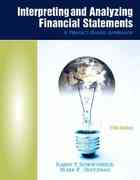Question
On January 1, 2015, Pail Inc. acquired 80% of the outstanding common stock of Sand Limited for a cash consideration of $7,800,000.On that date, Sand
On January 1, 2015, Pail Inc. acquired 80% of the outstanding common stock of Sand Limited for a cash consideration of $7,800,000.On that date, Sand Limited had share capital of $3,000,000 and retained earnings of $4,000,000.All its assets and liabilities were fairly valued on its balance sheet except the following:
Carrying valueFair value
Inventory$3,000,000$4,000,000
Land1,500,0001,000,000
Buildings (net)6,000,0008,000,000
Patents--500,000
Long-term debt4,500,0006,000,000
Additional information:
Sand's buildings had a remaining useful life of twenty years on the acquisition date.
Sand's inventories at January 1, 2015, had all been sold by the end of 2015.
Sand's long-term debt at January 1, 2015, matured on December 31, 2025.
On the acquisition date, it was estimated that the unrecorded patent had a remaining economic life of ten years.An impairment assessment at the end of 2019 established that the patent had no value on that date.This was the only impairment loss on the patent.
Goodwill impairment was assessed at the end of each year.The only impairment identified was $100,000 in each of 2016 and 2017 and a further $250,000 during 2019.
Pail provided management services to Sand throughout 2019, charging $2,500 per month for the services.The cost of providing those services is estimated to be $2,000 per month.
On June 30, 2019, Pail sold some land to Sand for $1,000,000.The land had cost Pail $500,000 when it was acquired.
On June 30, 2018, Pail sold some equipment to Sand for $200,000.The carrying value of the equipment immediately before the sale was $140,000.The equipment had an estimated remaining useful life of four years on the date of the intercompany sale.
During 2018, Sand sold merchandise to Pail for $1,500,000. Pail's inventories at December 31, 2013, included merchandise purchased from Sand for $800,000.During 2019, Sand sold merchandise to Pail for $2,000,000.One-quarter of this was still on hand at the end of that year.Sand prices its intercompany sales to yield a gross profit of 30%.
Both companies pay income tax at a rate of 40%.Ignore income taxes on the acquisition differential.
Pail accounts for its investment in Sand using the cost method.
Pail values the non-controlling interest in Sand on its consolidated balance sheet based on the fair value of that company's identifiable net assets on the acquisition date.
Both companies use straight-line amortization for both amortizable capital assets and premiums and discounts on long-term debt.

Step by Step Solution
There are 3 Steps involved in it
Step: 1

Get Instant Access to Expert-Tailored Solutions
See step-by-step solutions with expert insights and AI powered tools for academic success
Step: 2

Step: 3

Ace Your Homework with AI
Get the answers you need in no time with our AI-driven, step-by-step assistance
Get Started


